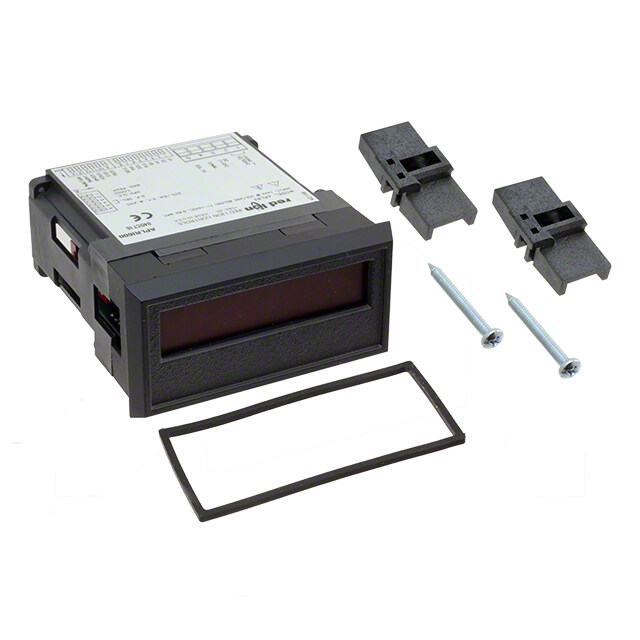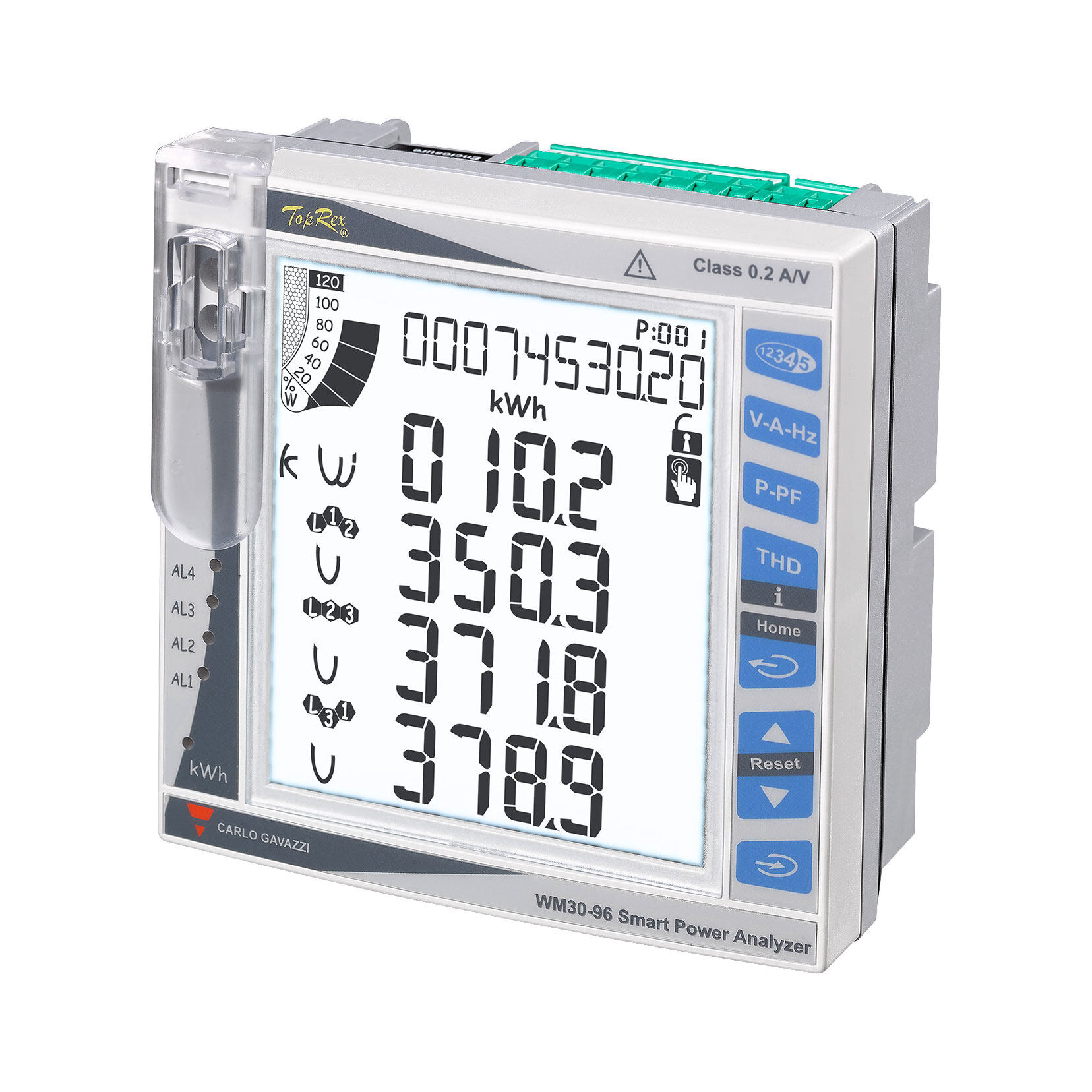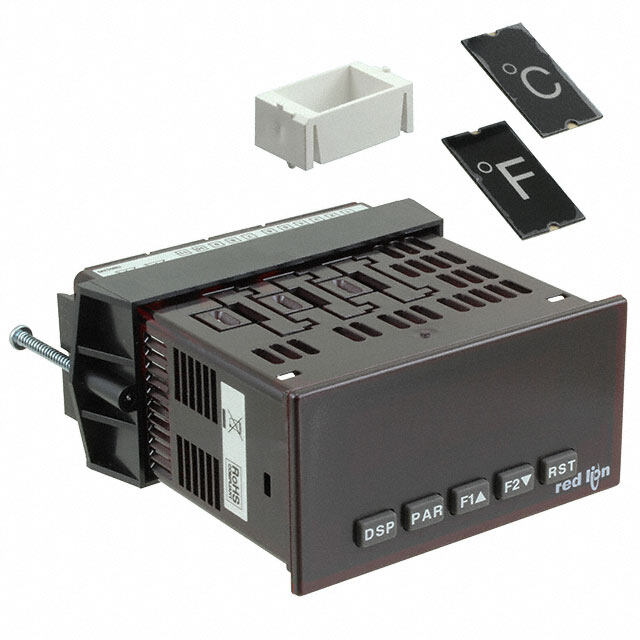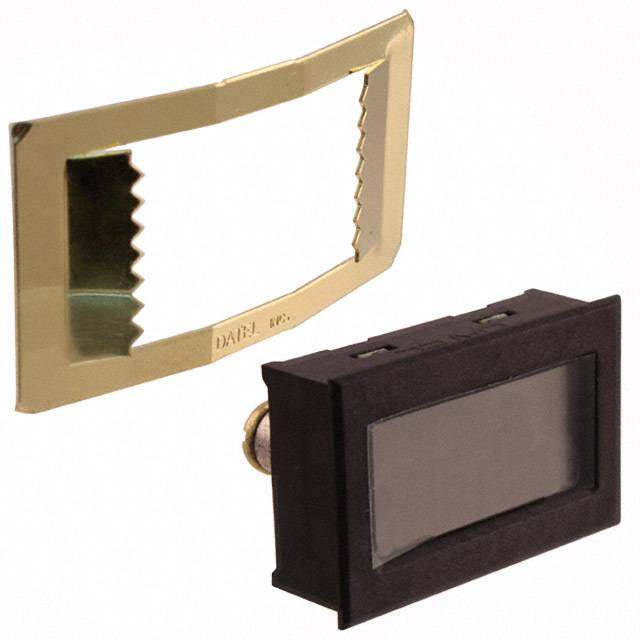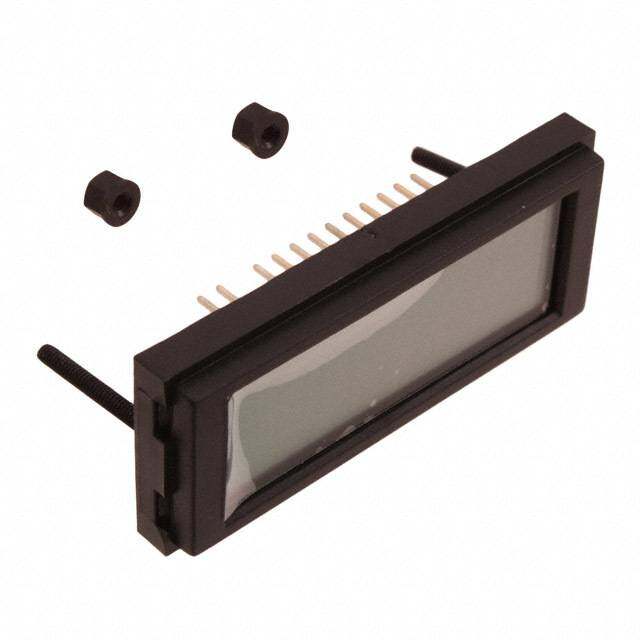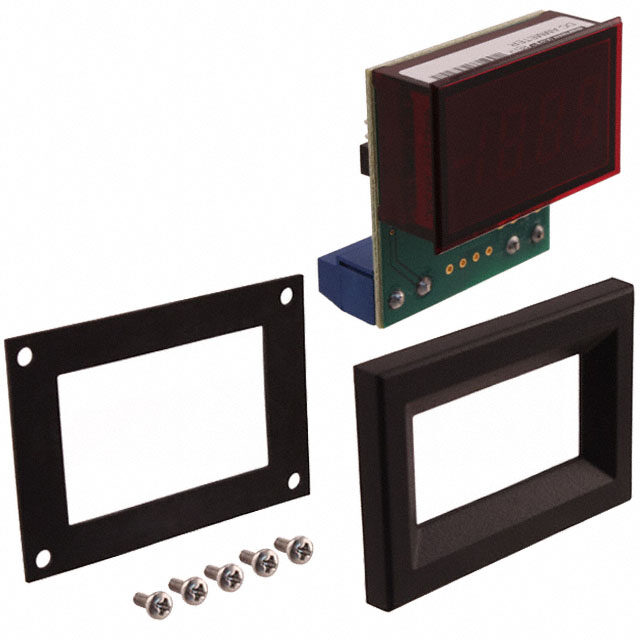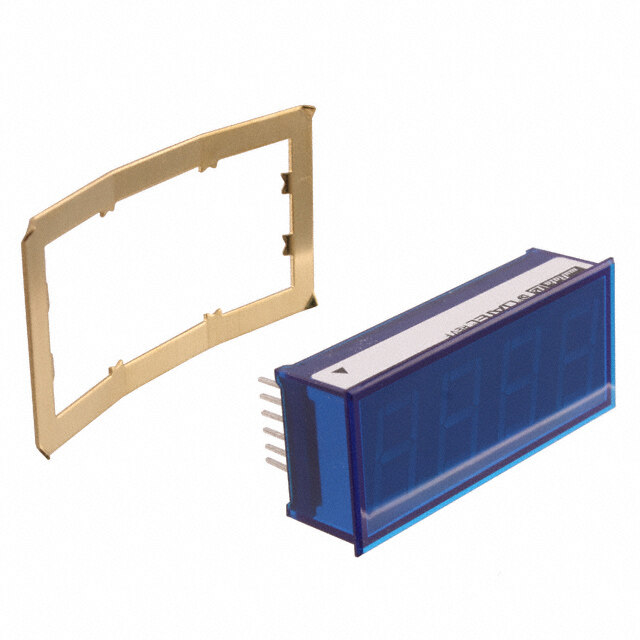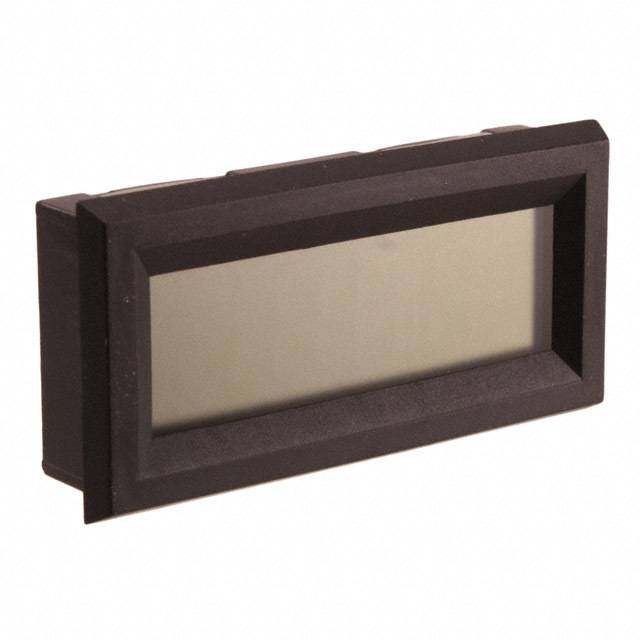- 型号: DMS-30DR-0-R-C
- 制造商: Murata
- 库位|库存: xxxx|xxxx
- 要求:
| 数量阶梯 | 香港交货 | 国内含税 |
| +xxxx | $xxxx | ¥xxxx |
查看当月历史价格
查看今年历史价格
DMS-30DR-0-R-C产品简介:
ICGOO电子元器件商城为您提供DMS-30DR-0-R-C由Murata设计生产,在icgoo商城现货销售,并且可以通过原厂、代理商等渠道进行代购。 DMS-30DR-0-R-C价格参考。MurataDMS-30DR-0-R-C封装/规格:面板仪表, Voltage (Voltmeter) LED - Red Characters Display Panel Mount。您可以下载DMS-30DR-0-R-C参考资料、Datasheet数据手册功能说明书,资料中有DMS-30DR-0-R-C 详细功能的应用电路图电压和使用方法及教程。
| 参数 | 数值 |
| 3D型号 | 点击此处下载产品Datasheethttp://www.murata-ps.com/3d/meters/mps_dpm_dms30dr.step.ziphttp://www.murata-ps.com/3d/meters/mps_dpm_dms30dr.sldprthttp://www.murata-ps.com/3d/meters/mps_dpm_dmsdr30.igs |
| 产品目录 | 工业控制装置,量表 |
| 描述 | DPM LED 200MV 3.5DIG DAYLIGHT RD |
| 产品分类 | |
| 品牌 | Murata Power Solutions Inc |
| 数据手册 | |
| 产品图片 | |
| 产品型号 | DMS-30DR-0-R-C |
| rohs | 无铅 / 符合限制有害物质指令(RoHS)规范要求 |
| 产品系列 | DMS-30DR |
| 产品目录绘图 |
|
| 产品目录页面 | |
| 侵入防护 | - |
| 其它名称 | 811-1033 |
| 安装类型 | 面板安装 |
| 工作温度 | 0°C ~ 60°C |
| 显示字符- 高度 | 0.560" (14.20mm) |
| 显示数字 | 3.5 |
| 显示样式 | 红色字符,黑色背景 |
| 显示类型 | LED - 红色字符 |
| 显示表面尺寸 | 2.55" 宽 x 1.27" 高 (64.8mm x 32.3mm) |
| 标准包装 | 12 |
| 校准 | - |
| 每行字符数 | 3.5 |
| 测量范围 | ±200mVDC |
| 温度系数 | - |
| 特性 | - |
| 电压-电源 | 5VDC |
| 相关产品 | /product-detail/zh/DMS-30-CP/811-1122-ND/1926165 |
| 端子类型 | PC 引脚 |
| 端接 | PC 引脚 |
| 类型 | 电压(电压表) |
| 精度 | - |
| 输出类型 | 基准 |
| 重量 | 0.046 磅(20.87g) |
| 面板开口尺寸 | 矩形 - 53.80mm x 22.30mm |


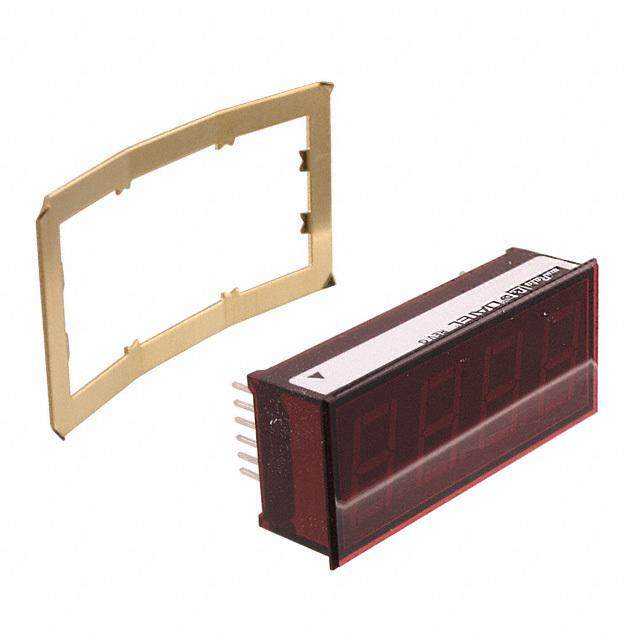
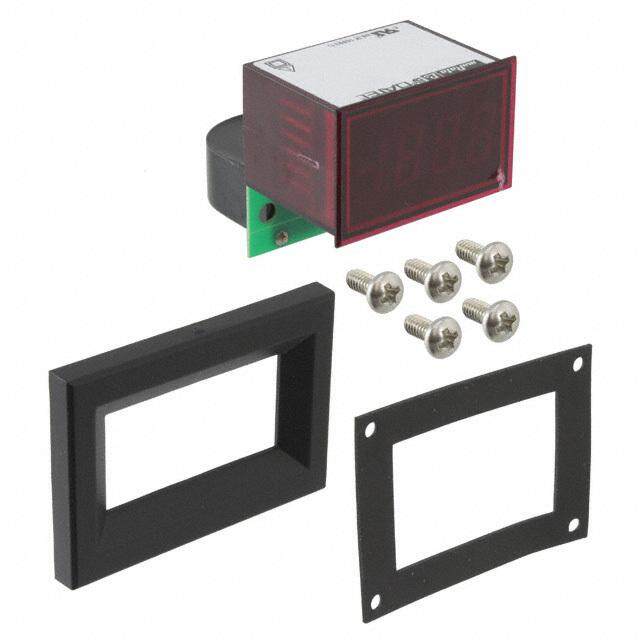

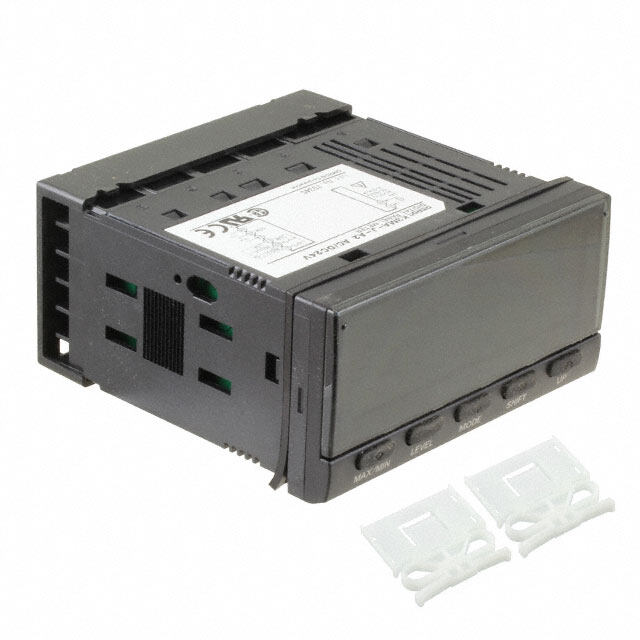

- 商务部:美国ITC正式对集成电路等产品启动337调查
- 曝三星4nm工艺存在良率问题 高通将骁龙8 Gen1或转产台积电
- 太阳诱电将投资9.5亿元在常州建新厂生产MLCC 预计2023年完工
- 英特尔发布欧洲新工厂建设计划 深化IDM 2.0 战略
- 台积电先进制程称霸业界 有大客户加持明年业绩稳了
- 达到5530亿美元!SIA预计今年全球半导体销售额将创下新高
- 英特尔拟将自动驾驶子公司Mobileye上市 估值或超500亿美元
- 三星加码芯片和SET,合并消费电子和移动部门,撤换高东真等 CEO
- 三星电子宣布重大人事变动 还合并消费电子和移动部门
- 海关总署:前11个月进口集成电路产品价值2.52万亿元 增长14.8%
PDF Datasheet 数据手册内容提取
DMS-30DR Series www.murata-ps.com Sunlight Readable, 3½ Digit Panel Meters with Auto-Dimming LED Displays FEATURES Murata Power Solutions’ new DMS-30DR Series are the fi rst digital panel meters to offer LED Super-bright LED displays are readable in direct displays that are readable in direct sunlight—no special fi lters or shading devices are required. sunlight! Their Autodim circuit automatically adjusts the display’s brightness to suit viewing environments Autodim circuitry automatically adjusts display ranging from total darkness to full, brilliant sunlight. A user-accessible brightness adjustment pin brightness enables custom intensity settings or display matching in multiple display applications. Washed Includes external brightness adjustment out, hard-to-read digital readouts are a thing of the past! Large (0.56"/14.2mm) easy-to-read red LED display Until now, users whose instrumentation required daylight visibility had to settle for less reliable LCD display technology. However, in order to remain legible in low ambient light, LCDs High reliability alternative to LCD displays require complex, power-hungry backlighting circuitry. And, these displays typically suffer from Ideal for automotive, industrial, and marine applications very narrow viewing angles. In contrast, DMS-30DR Series LED-based displays’ power consump- Encapsulated package mounts in panels or pc-boards tion drops as ambient light decreases, and their viewing angle extends to nearly 180 degrees vertically and horizontally. Miniature housing: 2.17˝ x 0.92" x 0.56" (55mm x 23mm x 14mm) All models operate from a single +5V supply, and draw as little as 7mA when operated in total darkness—that’s less than 1/10 Watt. At maximum brightness power consumption is typically 4 differential input ranges provide ±1 count accuracy less than 200mA (1 Watt). DMS-30DR voltmeters are available in four differential input voltage Single +5V supply; Less than 1-Watt power consumption ranges: ±200mV, ±2V, ±20V and ±200V. Input impedance is 1,000 megohms for the ±200mV 0 to +60°C operating temperature range and ±2V inputs and 1 megohm for the ±20V and ±200V inputs. CMRR for all devices is 86dB, and inputs are overvoltage protected to ±250V. Each meter incorporates a precision, ultra-stable voltage reference and is factory calibrated prior to encapsulation. The small size (2.17" x 0.92" x 0.56") of DMS-30DR meters is achieved by integrating their display, Autodim display drivers, light sensor, reference circuit, and A/D converter into in a rugged epoxy-encapsulated assembly. The device’s 12-pin, component-like, DIP package is both vibra- tion and moisture proof, making them ideal for harsh environments. Each package incorporates a built-in color fi lter and bezel, and is easily mounted in either panels or pc boards. 1 12 +5V SUPPLY +5V +5V (–) INPUT LO R2 (1) 0.01μF EXTERNAL ABDRJIGUSHTTMNEESNST 2 CONDVCE/DRCTER –5V –5V R1 11 (+) INPUT HI 909k 3 +5V A/D 10 ANALOG 5V RETURN CONVERTER COMMON –5V 1.225V 0 Vdc DATA REF. 4 9 DP 3 +1.225V REFERENCE OUT 1.82k 5 8 DP 2 REFERENCE OUT LIGHT +5V SENSOR 7 6 REFERENCE IN DP 1 (1)R2 is not used on ±200mV (-0) models or ±2V (-1) models. R2 = 100k on ±20V (-2) models and 9.1k on ±200V (-3) models. Figure 1. DMS-30DR Simplifi ed Schematic For full details go to www.murata-ps.com/rohs www.murata-ps.com/support MPM_DMS-30DR.C02 Page 1 of 6
DMS-30DR Series Sunlight Readable, 3½ Digit Panel Meters with Auto-Dimming LED Displays Performance/Functional Specifi cations Typical at TA = +25°C and supply voltage = +5V using the single-ended input circuit, Ordering Information unless otherwise noted. DMS-30DR-1- R - C Analog Inputs Min. Typ. Max. Units Full Scale Input Range: Input Range: RoHS DMS-30DR-0 – ±200 – mV 0 = ±200mV DMS-30DR-1 – ±2 – Volts 1 = ±2V LED Color: 2 = ±20V R = Red DMS-30DR-2 – ±20 – Volts 3 = ±200V DMS-30DR-3 – ±200 – Volts Accessories: Input Impedance: – DMS-EB-C Multi-purpose (gain/offset, 4-20mA, etc.) DMS-EB-RMS-C For true rms measurements of ac voltages DMS-30DR-0, -1 100 1000 – MΩ DMS-30-CP Panel cutout punch DMS-30DR-2, -3 0.9 1 – MΩ A panel-mount DMS-BZL2-C is supplied with each unit. Overvoltage Protection ➀ – – ±250 Volts See www.murata-ps.com/dpm-availability for model-specifi c availability. Common Mode Voltage Range – – ±2 Volts CMRR (dc to 60Hz) – 86 – dB TECHNICAL NOTES Control Inputs ➁ 1. External Brightness Adjustment (Pin 2): Pin 2 is internally con- Decimal Point Placement (Pins 4-6) Tie to pin 3 to activate nected to the high impedance input of an operational amplifi er that Ext. Bright (Pin 2) See Technical Note 1 amplifi es the output of the DMS-30DR’s ambient light sensor (ALS) circuit. The output of this amplifi er varies the voltage that drives the Performance DMS-30DR’s LED display. Leave pin 2 open for standard auto-dim- Sampling Rate 2.5 reading per second ming operation; in this mode, the ALS circuit will automatically adjust Accuracy (3 minute warm-up): the DMS-30DR’s LED brightness to compensate for changes in ambi- DMS-30PC-0 (Vin = +0.19V) – ±1 ±3 Counts ent lighting. As the ambient light striking the ALS increases, the LED display’s brightness will also increase; a decrease in ambient light will DMS-30PC-1 (Vin = +1.9V) – ±1 ±3 Counts reduce the display’s brightness. DMS-30PC-2 (Vin = +19V) – ±2 ±3 Counts The ALS circuit’s output signal can be overdriven by applying an DMS-30PC-3 (Vin = +190V) – ±2 ±3 Counts externally generated voltage directly to pin 2. External drivers will see Zero Reading (Vin = 0 Volts) “–001” “000” “001” approximately 600Kohms referenced to 5V RETURN. With pin 2 at Temperature Drift (0 = +60°C) – ±0.2 ±0.4 Cnts/°C +0.7Vdc or below, the DMS-30DR’s LED display is off, and total cur- +1.225V Reference Output (Pin 9)➁ +1.215 +1.225 +1.235 Volts rent drain from a nominal +5V supply is approximately 1mA. The LED display’s brightness will increase from minimum to maximum as the Power Supply Requirements voltage applied to pin 2 is varied from +0.8V up to +2.5V, respectively. Supply Voltage +4.75 +5.00 +5.25 Volts To enable continuous maximum display brightness, connect pin 2 Supply Current: directly to pin 1 (+5V SUPPLY); in this confi guration the total current Full Sunlight – +150 +250 mA drain for the meter will be approximately 200mA. Total Darkness – 3 5 mA 2. Minimum-Intensity Adjustment Potentiometer: Users can adjust Display the DMS-30DR’s minimum LED brightness to suit their requirements by adjusting the ¾-turn, rear-mounted intensity adjustment poten- Display Type and Size 3½ digit, 0.56"/14.2mm high LED tiometer. Please note, this potentiometer will have minimal impact Polarity Indication Autopolarity ("–" for negative Vin) on display brightness in high ambient light environments. See the Overrange Indication "–1___" for negative inputs Mechanical Specifi cations section for potentiometer locations. "1___" for positive inputs The intensity adjustment potentiometer is factory preset to its Physical/Environmental mid-point position, producing a typical current drain of 7mA. At it’s Operating Temperature 0 – +60 °C minimum and maximum positions, current drain is typically 3mA and Storage Temperature –40 – +75 °C 13mA, respectively. As viewed from the rear of the meter, with the Humidity (non-condensing) 0 – 95 % model number label facing up, turning the potentiometer clockwise increases the display’s intensity. Case Material Polycarbonate Weight 0.75 ounces (21 grams) 3. +1.225V REFERENCE OUTPUT (Pin 9): This pin is the output of the meter’s precision +1.225V internal reference IC. Pin 9 is referenced ➀ Applies for transient or continuous overvoltages applied to (+) INPUT HI (pin 11) with to ANALOG COMMON (pin 10), which in turn sits approximately +2V (–) INPUT LO (pin 12) properly connected. Pin 12 is not overvoltage protected (see Figure 1). Voltages applied to pin 12 should not exceed the supply voltage. above pin 3. Pin 9 should be buffered if it’s used to drive external ➁ See Technical Notes. loads since sourcing more than 15µA of current can affect both the www.murata-ps.com/support MPM_DMS-30DR.C02 Page 2 of 6
DMS-30DR Series Sunlight Readable, 3½ Digit Panel Meters with Auto-Dimming LED Displays accuracy and temperature drift of the meter. A ±1% 1.82K limiting resistor is connected between the reference IC and pin 9. APPLICATIONS 4. ANALOG COMMON (Pin 10): This pin is connected to an internal, DMS-30DR meters are highly versatile devices that can be used in low-noise, “relative” ground. Pin 10 also serves as the internal hundreds of applications. The application circuits chosen for this sec- ground for the +1.225V reference IC. ANALOG COMMON is used tion have historically received many inquiries. Every attempt has been in certain differential and “fl oating” measurements as described in made to ensure technical accuracy, and all of the following circuits the Applications section of this data sheet, and in DMS Applica- have been prototyped and tested to ensure functionality. Please keep tion Note 3. For the vast majority of applications, pin 10 should not in mind, however, that real-world applications are seldom as straight- be connected to pin 3 (5V RETURN), or to your system’s analog forward as the approaches presented here. Most applications have ground. many more components — and many more connections — than the 5. REFERENCE OUTPUT (Pin 8) and INPUT (Pin 7): Pin 8 is a preci- illustrations show. sion reference actively trimmed at the factory. For normal operation, The simplifi ed schematic shown in Figure 1 can be very useful when pin 8 must be tied to pin 7 to achieve all listed accuracy and drift debugging a malfunctioning panel meter circuit, particularly if the user specifi cations. has some knowledge of operational amplifi ers (op amps). The meter's 6. Decimal Point Placement: The location of the decimal point is user high-impedance input consists of an op amp powered from a ±5Vdc selectable, and the decimal point control pins (DP1-DP3) are active power supply (the –5V is internally generated). Knowing this, one can low functions. Select the desired decimal point by tying the appro- easily see why input signals applied to (–) INPUT LO and (+) INPUT HI priate pin (pin 4, 5 or 6) to pin 3 (5V RETURN). Unused decimal have to be kept within the power supply rails of ±5V. Also note that only point location pins should be left open. Hard wiring is preferable, pin 11 has a current-limiting 909kΩ series resistor. High input voltages however, you can use logic gates to exercise dynamic control over that have a common ground with pin 3 (5V RETURN) should only be the location of the decimal point if the following drive conditions are applied to pin 11 ((+) INPUT HI) and never to pin 12. In these high-volt- met: age cases, pin 12 should always be tied to pin 3 (5V RETURN). Applied “0” Voltage: +0.4V max One of the simplifi ed schematic's noteworthy features is that it Drive Current*: 6mA max. shows internal voltage values. It also shows that pin 3 is the meter's zero-volt reference point — regardless of the type of power or signal * The driving gates must be able to sink this much current (IOL) source used. This is an important point to keep in mind when a digital with a logic “0” output. or analog multimeter is used to make system measurements. The 7. Gain-Adjust Potentiometer: The gain-adjust potentiometer located multimeter's negative lead (usually the black one) must be connected on the rear of the meter has approximately ±50 counts (±2.5%) to pin 3 (5V RETURN). of adjustment range with a near full-scale input. Since these meters essentially have no zero/offset errors, a gain adjustment is 1. Single-Ended Input Confi gurations: True single-ended measure- effectively an overall accuracy adjustment. Though they may be ments can be made with any DMS-30DR meter. The circuit of Figure performed at any input level except zero, accuracy adjustments are 2 avoids problems normally associated with ground-loop currents. most effective when performed with half-scale (or higher) positive Separate ground runs should be used for 5V RETURN (pin 3) and (–) input signals. INPUT LO (pin 12). This will ensure that large LED currents will not fl ow in the wiring that connects V to (–) INPUT LO (pin 12). Ground- If a wider adjustment range is required, an external potentiometer IN loop currents can cause unstable readings. circuit can be confi gured using the meter’s +1.225V reference output (pin 9). The circuit shown in Figure 9 provides ±10% range of adjustment. DMS-30DR-1 11 8 8. Soldering Methods: All models in the DMS-30DR Series easily + (+) IN HI REF OUT withstand most common leaded or lead-free soldering opera- V IN tions, performed either manually or by wave soldering machines. – However, users should evaluate the effects their particular soldering 12 7 techniques may have on the meter’s plastic case and precision (–) IN L O REF IN 1 6 3 electrical performance. We highly recommend using low residue, +5V SUP DP1 5V RET no-clean solders. 9. Suggested Mating Connectors: 85-264Vac Panel mounted: Connector housing P/N 4320-01069-0 Terminal type: P/N 4400-01032-0 AC to DC Converter Crimping tool: P/N 39-2099000 Figure 2. Single-Ended Input Confi guration Wire size: 22 to 26 AWG Insulation diameter: 0.062” (1.57mm) maximum Stripping length: 0.100 to 0.125” (2.54 to 3.17mm) Board mounted: Socket: P/N 4320-01074-0 www.murata-ps.com/support MPM_DMS-30DR.C02 Page 3 of 6
DMS-30DR Series Sunlight Readable, 3½ Digit Panel Meters with Auto-Dimming LED Displays APPLICATIONS 2. Differential Input Confi gurations: Differential measurements can be 4. Floating Signal Source Measurements: Floating signals can be made with all DMS-30DR meters. Figure 3, though not a practical real- measured using the circuits shown in Figures 5 and 6. Connecting pin world application, uses a voltage divider to demonstrate the concept 10 (ANALOG COMMON) or pin 3 (5V RETURN) to (–) INPUT LO (pin of a differential input signal. Be careful not to exceed the ±2V common 12)provides the reference point for the meter's input. mode voltage limitation for 5V-powered meters. A "fl oating" input is a signal that has no galvanic connection to the meter's power supply. In the fi gures below, the 1.5V battery illustrates a true fl oating input. DMS-30DR-1 R1 REF OUT 8 11 1k (+) IN HI DMS-30DR-1 11 8 REF IN 7 12 R 1k2 (+) IN HI REF OUT DP1 6 (–) IN LO 1.5V + +5V SU1 P 3 5 V RET R 1k3 C ELL – (–) IN L1 O2 7 R EF IN 1 3 6 +5V SU P 5V RET DP 1 85-264Vac 85-264Vac AC to DC Converter AC to DC Converter Figure 3. Differential Input Confi guration Figure 5. Floating Input Measurements 3. Engineering Scaling: For measuring voltages greater than the full scale input range of a given meter, the input signal must be attenuated. DMS-30DR-1 A simple voltage divider (similar to that shown in Figure 4) will scale 11 the input to within the range of the selected meter. R1 and R2 should (+) IN HI 8 R EF OUT be precision, ±1%, metal-fi lm resistors with absolute TCR's less than 1.5V + ANA COM1 M0 50ppm/°C. See Ap Note 4 for more information on engineering scaling. C ELL – 12 7 (–) IN LO REF IN 50kΩ < R1 + R2 < 10MΩ 1 3 6 +5V SU P 5V RET DP1 R2 x V = Reading IN R1 + R2 85-264Vac + AC to DC Converter R1 DMS-30DR-1 11 (+) IN HI 8 Figure 6. Floating Input Measurements V IN REF OUT (Alternate Confi guration) R2 12 (–) IN L O 5. Process Control (4-to-20mA) Measurements: In many common pro- – 7 cess-control applications, a 4-to-20mA current loop is used to transmit REF IN 1 3 information. Because DMS-30DR meters have such high input imped- +5V SU P 5 V RET ance, a simple shunt resistor across the meter's input can be used to convert the loop current to a voltage. See Figure 7. The value of the 85-264Vac shunt resistor is a function of the scaling requirements of the particular application and can be calculated using the following equation: R = R1 = V /I Figure 4. Input Attenuation Circuit Shunt Fsr Fsr Where: V = Full scale reading (in Volts) Fsr I = Relative full scale current (in Amps) Fsr www.murata-ps.com/support MPM_DMS-30DR.C02 Page 4 of 6
DMS-30DR Series Sunlight Readable, 3½ Digit Panel Meters with Auto-Dimming LED Displays APPLICATIONS Example: For a meter with a 2V full scale input (1.999 full represents a basic ammeter connection diagram. A detailed application scale reading) and a desired display reading of note describing digital dc ammeters is available at www.cd4power.com. "1000" (with an input of 20mA), V = 1.000 Volts Fsr R = 1.000V/(0.020 – 0.004)A Shunt R = 1.000V/0.016A = 62.5 Ohms (cid:17) (cid:36)(cid:45)(cid:51)(cid:13)(cid:19)(cid:16)(cid:36)(cid:50)(cid:13)(cid:16) Shunt (cid:11)(cid:21)(cid:54)(cid:0)(cid:51)(cid:53)(cid:48) (cid:24) (cid:50)(cid:37)(cid:38)(cid:0)(cid:47)(cid:53)(cid:52) (cid:11) To calibrate the circuit of Figure 7, perform the following: (cid:21)(cid:54)(cid:68)(cid:67) (cid:19) 1. With 4mA applied, adjust the 50kΩ potentiometer (R2) to (cid:110) (cid:21)(cid:54)(cid:0)(cid:50)(cid:37)(cid:52) (cid:23) display a reading of "000" (assuming that is the desired (cid:50)(cid:37)(cid:38)(cid:0)(cid:41)(cid:46) (cid:22) reading). (cid:36)(cid:48)(cid:17) (cid:17)(cid:18) (cid:17)(cid:17) (cid:8)(cid:110)(cid:9)(cid:0)(cid:41)(cid:46)(cid:0)(cid:44)(cid:47) (cid:8)(cid:11)(cid:9)(cid:0)(cid:41)(cid:46)(cid:0)(cid:40)(cid:41) 2. With 20mA applied, adjust the gain-adjust potentiometer on (cid:16)(cid:14)(cid:17)(cid:21)(cid:16)(cid:54) the back of the meter to display a reading of "1000". For (cid:17)(cid:14)(cid:21)(cid:0)(cid:33)(cid:77)(cid:80)(cid:0)(cid:8)(cid:44)(cid:79)(cid:65)(cid:68)(cid:0)(cid:35)(cid:85)(cid:82)(cid:82)(cid:69)(cid:78)(cid:84)(cid:9) different full scale readings, alter the value of RShunt accordingly. (cid:16)(cid:14)(cid:17)(cid:55) (cid:44)(cid:79)(cid:65)(cid:68) (cid:50)(cid:51)(cid:72)(cid:85)(cid:78)(cid:84) (cid:8)(cid:19)(cid:14)(cid:19)(cid:0)(cid:55)(cid:0)(cid:0)(cid:9) DMS-30DR-1 11 8 + (+) IN HI R EF OUT Figure 8. Basic DC Ammeter Circuit 10 ANA COM M 4-20mA R1 (–) IN L1 O2 7 R EF IN 7. (Epxinte 8r)n taol RGEaiFnE ARdEjNusCtEm IeNn t(:p inC o7n) nfoerc nt oRrEmFaEl,R faEcNtoCryE cOaUlibTrated, 9 1 3 operation. Use the +1.225V REFERENCE OUT (pin 9) for applica- 1 .225V 5 V SUP 5 V RET R2 REF tions needing external gain adjustment. Figure 10 shows the wiring – 50k confi guration for each model. Calibration is performed with a precise, near-full-scale, input voltage. 85-264Vac (cid:17)(cid:17) (cid:36)(cid:45)(cid:51)(cid:13)(cid:19)(cid:16)(cid:36)(cid:50) (cid:8)(cid:11)(cid:9)(cid:0)(cid:41)(cid:46)(cid:0)(cid:40)(cid:41) AC to DC Converter (cid:47)(cid:53)(cid:52) Figure 7. 4-to-20mA Current Loop Operation (cid:54)(cid:47)(cid:44)(cid:52)(cid:33)(cid:39)(cid:37) (cid:19) (cid:35)(cid:33)(cid:44)(cid:41)(cid:34)(cid:50)(cid:33)(cid:52)(cid:47)(cid:50) (cid:21)(cid:54)(cid:0)(cid:50)(cid:37)(cid:52) (cid:17)(cid:18) (cid:35)(cid:47)(cid:45) (cid:8)(cid:110)(cid:9)(cid:0)(cid:41)(cid:46)(cid:0)(cid:44)(cid:47) 6. Digital Ammeter: Digital ammeters are fi nding ever-increasing usage (cid:17)(cid:16) (cid:24) (cid:23) (cid:25) (cid:33)(cid:46)(cid:33)(cid:0)(cid:35)(cid:47)(cid:45)(cid:45) (cid:46)(cid:35) (cid:50)(cid:37)(cid:38)(cid:0)(cid:41)(cid:46) (cid:17)(cid:14)(cid:18)(cid:18)(cid:21)(cid:54)(cid:0)(cid:50)(cid:37)(cid:38) because analog-style ammeters (moving-vane types) now cost roughly the same as their digital counterparts. Additionally, analog ammeters (cid:24)(cid:14)(cid:20)(cid:21)(cid:75)(cid:12)(cid:0)(cid:17)(cid:5) (cid:35)(cid:79)(cid:78)(cid:78)(cid:69)(cid:67)(cid:84)(cid:73)(cid:79)(cid:78)(cid:83) are not nearly as rugged as modern digital panel voltmeters. Figure 9 (cid:70)(cid:79)(cid:82)(cid:0)(cid:155)(cid:18)(cid:54)(cid:12)(cid:0)(cid:155)(cid:18)(cid:16)(cid:54)(cid:0) (cid:17)(cid:75) (cid:65)(cid:78)(cid:68)(cid:0)(cid:155)(cid:18)(cid:16)(cid:16)(cid:54)(cid:0)(cid:77)(cid:79)(cid:68)(cid:69)(cid:76)(cid:83) illustrates a typical ammeter application. The circuit uses a ±200mV (cid:17)(cid:16)(cid:0)(cid:84)(cid:79)(cid:0)(cid:18)(cid:16)(cid:0)(cid:52)(cid:85)(cid:82)(cid:78)(cid:83) input meter — the preferred range for most ammeters — to measure (cid:35)(cid:79)(cid:78)(cid:78)(cid:69)(cid:67)(cid:84)(cid:73)(cid:79)(cid:78)(cid:83) the voltage developed across a 0.1Ω current shunt. The circuit shown (cid:17)(cid:75) (cid:24)(cid:14)(cid:20)(cid:21)(cid:75)(cid:12)(cid:0)(cid:17)(cid:5) (cid:70)(cid:79)(cid:82)(cid:0)(cid:155)(cid:18)(cid:16)(cid:16)(cid:77)(cid:54) (cid:17)(cid:16)(cid:0)(cid:84)(cid:79)(cid:0)(cid:18)(cid:16)(cid:0)(cid:52)(cid:85)(cid:82)(cid:78)(cid:83) (cid:77)(cid:79)(cid:68)(cid:69)(cid:76)(cid:83) Figure 9. External Gain Adjustment www.murata-ps.com/support MPM_DMS-30DR.C02 Page 5 of 6
DMS-30DR Series Sunlight Readable, 3½ Digit Panel Meters with Auto-Dimming LED Displays MECHANICAL SPECIFICATIONS Front View IDENTPIIFNI E#R1 XX-X-RD-03-SMD CALIBRATION AND MIN-INTENSITY POTENTIOMETER HOLE LOCATIONS FRONT VIEW PIN 1 +5V SUPPLY 1 12 (–) INPUT LO INTENSITY CALIBRATION EXT. BRIGHTNESS 2 11 (+) INPUT HI 5V RETURN 3 10 ANALOG COMMON (05.2.2005) (06.2.6600) DDPP32 45 98+R1E.F22E5RVE RNECFEE ORUETNCE OUT DP1 6 7REFERENCE IN 0(1.559.15) (06..23550) DP1 DP2 DP3 0.92 2.17 0.125 (3.175) DIAMETER (23.4) (55.1) (USE ONLY WHEN PC BOARD MOUNTING) 0.84 2.09 (21.3) (53.1) MECHANICAL DIMENSIONS: Inches (mm) 0.560 TOLERANCES: 2 PL DEC ±0.02 (±0.51) 0.040 (14.22) (1.02) 3 PL DEC ±0.010 (±0.254) LEAD DIMENSIONS: 0.025 (0.635) x 0.025 (0.635) NOMINAL 0.25 (6.4) TYP. RECOMMENDED PC BOARD FINISHED HOLE DIAMETER: 0.042 ±0.003 (1.067 ±0.076) 0.040 0.10 (1.02) (2.5) 1.80 0.15 (04..137) TYP. (01..00420) (45.7) T(3Y.7P.) TYP. 0.50 (12.7) BEZEL INSTALLATION AND RECOMMENDED DRILL AND PANEL CUTOUT (cid:16)(cid:14)(cid:17)(cid:24)(cid:23) (cid:16)(cid:14)(cid:17)(cid:21)(cid:3)(cid:22)(cid:18)(cid:0)(cid:8)(cid:13)(cid:19)(cid:21)(cid:14)(cid:22)(cid:25)(cid:0)(cid:22)(cid:41)(cid:46)(cid:9)(cid:0)(cid:36)(cid:51)(cid:37)(cid:37)(cid:50)(cid:37)(cid:48)(cid:52) (cid:8)(cid:20)(cid:14)(cid:23)(cid:21)(cid:9) BEZEL INSTALLATION PANEL (cid:38)(cid:50)(cid:47)(cid:46)(cid:52)(cid:0)(cid:54)(cid:41)(cid:37)(cid:55) (cid:17)(cid:14)(cid:18)(cid:23)(cid:16) (cid:36)(cid:45)(cid:51)(cid:13)(cid:34)(cid:58)(cid:44)(cid:18) (cid:8)(cid:19)(cid:18)(cid:14)(cid:18)(cid:22)(cid:9) GASKET BEZEL (cid:18)(cid:14)(cid:21)(cid:21)(cid:0)(cid:8)(cid:22)(cid:20)(cid:14)(cid:23)(cid:23)(cid:9) (cid:16)(cid:14)(cid:17)(cid:17)(cid:22) (cid:41)(cid:46)(cid:52)(cid:37)(cid:50)(cid:46)(cid:33)(cid:44)(cid:0)(cid:35)(cid:47)(cid:50)(cid:46)(cid:37)(cid:50)(cid:0)(cid:50)(cid:33)(cid:36)(cid:41)(cid:41)(cid:26) (cid:8)(cid:18)(cid:14)(cid:25)(cid:21)(cid:9) (cid:16)(cid:14)(cid:16)(cid:19)(cid:18)(cid:0)(cid:8)(cid:16)(cid:14)(cid:24)(cid:17)(cid:9)(cid:0)(cid:45)(cid:33)(cid:56)(cid:14) (cid:17)(cid:14)(cid:16)(cid:23) (cid:16)(cid:14)(cid:24)(cid:23)(cid:24) (cid:8)(cid:18)(cid:23)(cid:14)(cid:17)(cid:24)(cid:9) (cid:48)(cid:33)(cid:46)(cid:37)(cid:44)(cid:0)(cid:35)(cid:53)(cid:52)(cid:47)(cid:53)(cid:52) (cid:8)(cid:18)(cid:18)(cid:14)(cid:19)(cid:16)(cid:9) (cid:18)(cid:14)(cid:17)(cid:17)(cid:24)(cid:0)(cid:8)(cid:21)(cid:19)(cid:14)(cid:24)(cid:16)(cid:9) (cid:18)(cid:14)(cid:19)(cid:21)(cid:0)(cid:8)(cid:21)(cid:25)(cid:14)(cid:22)(cid:25)(cid:9) (cid:16)(cid:14)(cid:16)(cid:25)(cid:22) (cid:8)(cid:18)(cid:14)(cid:20)(cid:20)(cid:9) (cid:16)(cid:14)(cid:16)(cid:25)(cid:19)(cid:0)(cid:8)(cid:18)(cid:14)(cid:19)(cid:22)(cid:18)(cid:9)(cid:0)(cid:36)(cid:41)(cid:33)(cid:45)(cid:37)(cid:52)(cid:37)(cid:50)(cid:0)(cid:8)(cid:20)(cid:0)(cid:50)(cid:37)(cid:49)(cid:53)(cid:41)(cid:50)(cid:37)(cid:36)(cid:9) This product is subject to the following operating requirements Murata Power Solutions, Inc. and the Life and Safety Critical Application Sales Policy: 129 Flanders Road, Westborough, MA 01581 U.S.A. Refer to: http://www.murata-ps.com/requirements/ ISO 9001 and 14001 REGISTERED Murata Power Solutions, Inc. makes no representation that the use of its products in the circuits described herein, or the use of other technical information contained herein, will not infringe upon existing or future patent rights. The descriptions contained herein do not imply the granting of licenses to make, use, or sell equipment constructed in accordance therewith. Specifi cations are subject to change without notice. © 2018 Murata Power Solutions, Inc. www.murata-ps.com/support MPM_DMS-30DR.C02 Page 6 of 6
Mouser Electronics Authorized Distributor Click to View Pricing, Inventory, Delivery & Lifecycle Information: M urata: DMS-30DR-0-R-C DMS-30DR-1-R-C DMS-30DR-2-R-C DMS-30DR-3-R-C

 Datasheet下载
Datasheet下载

